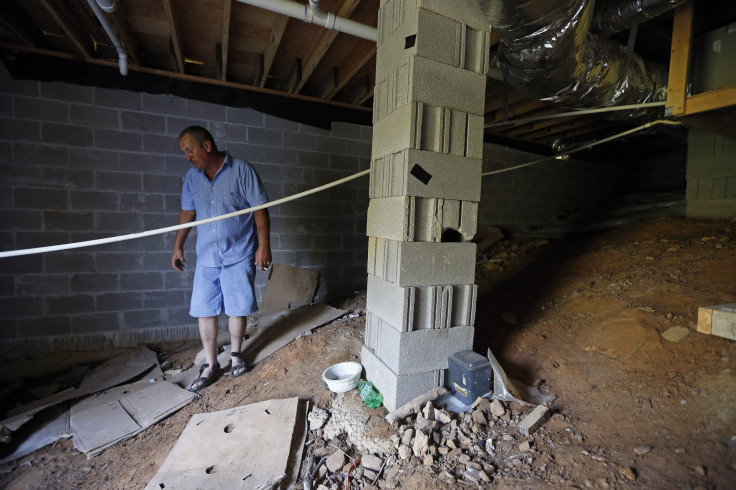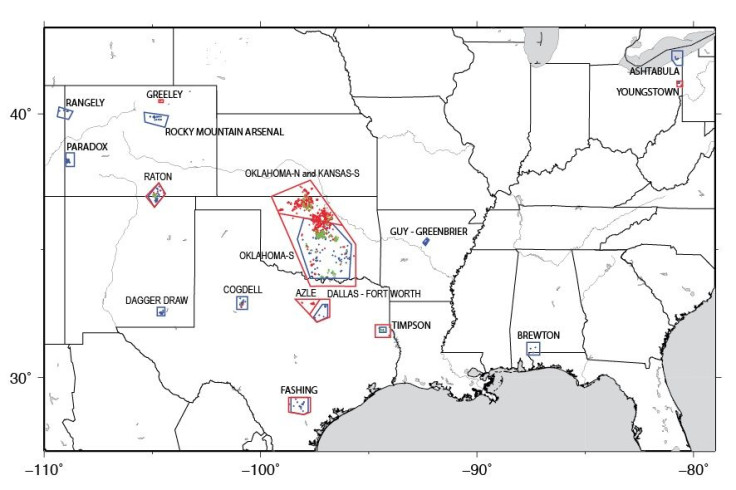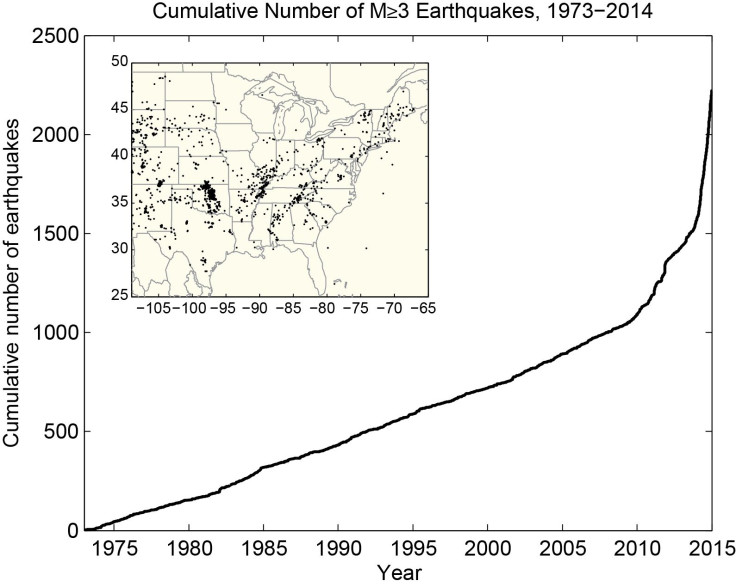Federal Scientists Map The Rise Of Man-Made Earthquakes Caused By Fracking Injection Wells

The U.S. oil and gas boom is causing America to shake. In energy-rich areas across eight states, earthquake activity is sharply rising as companies inject unprecedented volumes of drilling wastewater into underground wells. Now, federal scientists are starting to study the hazard that crumbling buildings, cracking roads and falling objects could pose to residents, local governments and insurance companies.
The U.S. Geological Survey (USGS) on Thursday released a preliminary set of models to forecast how hazardous ground shaking could be in the areas that have seen a sharp uptick in seismicity in recent years. The models aim to calculate how often earthquakes are expected to occur in the next year, and by what degree the ground is likely to shake as a result.
“These earthquakes are occurring at a higher rate than ever before and pose a much greater risk to people living nearby,” Mark Petersen, who heads the USGS National Seismic Hazard Modeling Project, said in a statement Thursday. He added the agency is developing methods to better assess seismic hazards in the central and eastern United States “in order to support decisions that help keep communities safe from ground shaking.”
USGS scientists identified 17 areas that have seen a substantial increase in earthquake activity since 2000 due to energy industry activities. The areas are clustered in eight states: Alabama, Arkansas, Colorado, Kansas, New Mexico, Ohio, Oklahoma and Texas.

U.S. oil and gas production has soared in recent decades thanks to advances in drilling technologies. Hydraulic fracturing, or fracking, has made it possible to extract previously unreachable reserves trapped in layers of shale rock. “Dewatering” techniques allow drillers to revisit older wells, where the remaining reserves are mixed with brackish water.
Crude oil production hit 8.68 million barrels a day in 2014, up nearly 75 percent from 2000 production levels, U.S. Energy Information Administration data show. Natural gas production totaled about 27.2 million cubic feet last year, a rise of 35 percent compared with 2000 levels.
But along with fossil fuel resources, the unconventional drilling methods are turning up billions of gallons of wastewater, which is salty or polluted by chemicals and can’t be mixed with freshwater supplies. As energy companies inject more of this liquid into deep disposal wells, pressure is building atop the earth’s fault lines, triggering earthquakes in areas with little previous seismic activity. Oklahoma, for instance, experienced 585 earthquakes of magnitude 3.0 or greater last year, up from about two on average each year before the state’s drilling boom began in 2008.

Oklahoma’s government on Wednesday confirmed that injection wells were mostly likely to blame for the state’s earthquake swarm -- a sharp turnaround for state officials, who for years expressed skepticism about the cause despite the scientific evidence.
Peterson said the USGS report offers the first comprehensive assessment of how man-made earthquakes could increase hazard levels in the 17 particular locations. The preliminary models draw on data about earthquake rates, locations, maximum magnitude and ground motions.
USGS scientists said they intend to expand the scope of their research to include western states where oil and gas activity is rising. In the report, they noted that most disposal wells do not result in felt earthquakes, and that the actual practice of fracking is “only occasionally” the direct cause of detectable shaking.
© Copyright IBTimes 2024. All rights reserved.





















